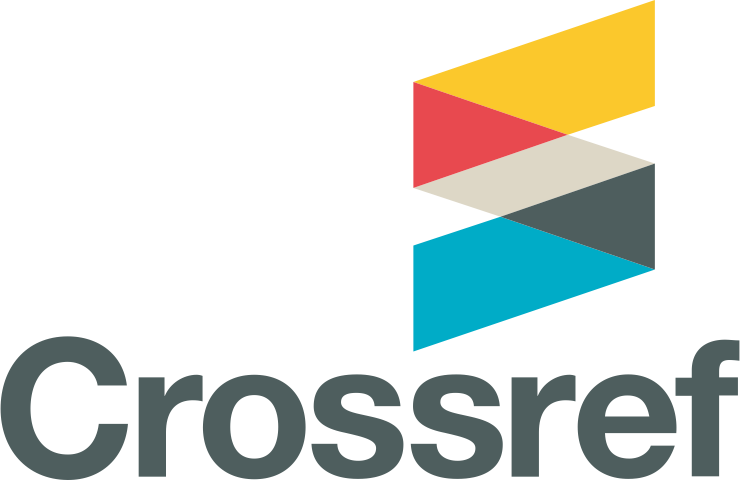Data Mining Algorithm Testing For SAND Metaverse Forecasting
DOI:
https://doi.org/10.33633/jais.v7i3.7155Abstract
Metaverse is a technology that allows us to buy virtual land. In the future life in the real world can be duplicated into the Metaverse to increase efficiency, effectiveness, and a world without being limited by space and time. To buy land in the Metaverse, one can be done by using SAND. SAND is a crypto asset from a game called The Sandbox which functions as a transaction tool where in that game we can buy land and build it for various purposes just like we can store our Non-Fungible Tokens there. Metaverse is a digital business that will promise in the future because it offers easy and fast transactions. This study aims to compare the exact algorithm for making predictions about the SAND cryptocurrency used to buy Metaverse land. 7 algorithms are being compared, namely Deep Learning, Linear Regression, Neural Networks, Support Vector Machines, Generalized Linear Models, Gaussian Process, and K-Nearest Neighbors. The research method used is Knowledge Discovery in Databases. The research results show that the Support Vector Machines Algorithm has the most optimal Root Means Square Error value, root_mean_squared_error: 0.022 +/- 0.062 (micro average: 0.062 +/- 0.000). Based on this comparison, the Support Vector Machines Algorithm is suitable for predicting SAND Metaverse prices.References
A. Ahmad and W. Gata, “Sentimen Analisis Masyarakat Indonesia di Twitter Terkait Metaverse dengan Algoritma Support Vector Machine,” J. JTIK (Jurnal Teknol. Inf. dan Komunikasi), vol. 6, no. 4, pp. 548–555, 2022, doi: 10.35870/jtik.v6i4.569.
S. M. Park and Y. G. Kim, “A Metaverse: Taxonomy, Components, Applications, and Open Challenges,” IEEE Access, vol. 10, pp. 4209–4251, 2022, doi: 10.1109/ACCESS.2021.3140175.
I. Akbar Endarto and Martadi, “Analisis Potensi Implementasi Metaverse Pada Media Edukasi Interaktif,” J. Barik, vol. 4, no. 1, pp. 37–51, 2022, [Online]. Available: https://ejournal.unesa.ac.id/index.php/JDKV/.
A. Solechan and T. W. A. Putra, “Literatur Review : Peluang dan Tantangan Metaverse,” J. Tek. Inform. dan Multimed., vol. 2, no. 1, pp. 62–70, 2022, [Online]. Available: http://journal.politeknik-pratama.ac.id/index.php/JTIM?page62.
Q. Yang, Y. Zhao, H. Huang, Z. Xiong, J. Kang, and Z. Zheng, “Fusing Blockchain and AI With Metaverse: A Survey,” IEEE Open J. Comput. Soc., vol. 3, pp. 122–136, 2022, doi: 10.1109/ojcs.2022.3188249.
A. S. Yudistira and A. Nugroho, “Prediction Of The English Premier League Champion Team For The 2021 / 2022 Season Using The Naïve Bayes Method,” JUTIF, vol. 3, no. 5, pp. 1239–1243, 2022.
Z. R. S. Elsi et al., “Utilization of Data Mining Techniques in National Food Security during the Covid-19 Pandemic in Indonesia,” J. Phys. Conf. Ser., pp. 1–7, 2020, doi: 10.1088/1742-6596/1594/1/012007.
A. D. Arisandi, Ferdiansyah, L. Atika, E. S. Negara, and K. R. N. Wardani, “Prediksi Mata Uang Bitcoin Menggunakan LSTM Dan Sentiment Analisis Pada Sosial Media,” J. Ilm. Komputasi, vol. 19, no. 4, pp. 559–566, 2020, doi: 10.32409/jikstik.19.4.370.
A. Nurdiansyah, M. T. Furqon, and B. Rahayudi, “Prediksi Harga Bitcoin Menggunakan Metode Extreme Learning Machine (ELM) dengan Optimasi Artificial Bee Colony (ABC),” J. Pengemb. Teknol. Inf. dan Ilmu Komput., vol. 3, no. 6, pp. 5531–5539, 2019.
N. F. B. Pradana and S. Lestanti, “Aplikasi Prediksi Jangka Pendek Harga Bitcoin Menggunakan Metode ARIMA,” J. Ilm. Inform. Komput., vol. 25, no. 3, pp. 160–174, 2020, doi: 10.35760/ik.2020.v25i3.3128.
S. Saadah and H. Salsabila, “Prediksi Harga Bitcoin Menggunakan Metode Random Forest (Studi Kasus: Data Acak Pada Awal Masa Pandemic Covid-19),” J. Komput. Terap., vol. 7, no. Vol. 7 No. 1 (2021), pp. 24–32, 2021, doi: 10.35143/jkt.v7i1.4618.
K. D. Larasati and A. H. Primandari, “Forecasting Bitcoin Price Based on Blockchain Information Using Long-Short Term Method,” Param. J. Stat., vol. 1, no. 1, pp. 1–6, 2021, doi: 10.22487/27765660.2021.v1.i1.15389.
A. Mulyani et al., “The Prediction Of PPA And KIP-Kuliah Scholarship Recipients Using Naive Bayes Algorithm,” JUTIF, vol. 3, no. 4, pp. 821–827, 2022.
I. T. Julianto, D. Kurniadi, M. R. Nashrulloh, and A. Mulyani, “Comparison Of Classification Algorithm And Feature Selection In Perbandingan Algoritma Klasifikasi Dan Feature Selection,” JUTIF, vol. 3, no. 3, pp. 739–744, 2022.
yahoo finance, “The Sandbox USD (SAND-USD),” finance.yahoo.com, 2022. https://finance.yahoo.com/quote/SAND-USD/history/.
A. D. Savitri, F. A. Bachtiar, and N. Y. Setiawan, “Segmentasi Pelanggan Menggunakan Metode K-Means Clustering Berdasarkan Model RFM Pada Klinik Kecantikan (Studi Kasus : Belle Crown Malang),” J. Pengemb. Teknol. Inf. dan Ilmu Komput. Univ. Brawijaya, vol. 2, no. 9, pp. 2957–2966, 2018.
Mikhael, F. Andreas, and U. Enri, “Perbandingan Algoritma Linear Regression, Neural Network, Deep Learning, Dan K-Nearest Neighbor (K-Nn) Untuk Prediksi Harga Bitcoin,” JSI J. Sist. Inf., vol. 14, no. 1, pp. 2450–2464, 2022, [Online]. Available: http://ejournal.unsri.ac.id/index.php/jsi/index.
T. Sellar and A. A. Arulrajah, “The Role of Social Support on Job Burnout in the Apparel Firm,” Int. Bus. Res., vol. 12, no. 1, p. 110, 2018, doi: 10.5539/ibr.v12n1p110.
Downloads
Published
Issue
Section
License
- Authors retain copyright and grant the journal right of first publication with the work simultaneously licensed under a Creative Commons Attribution License that allows others to share the work with an acknowledgment of the work's authorship and initial publication in this journal.
- Authors are able to enter into separate, additional contractual arrangements for the non-exclusive distribution of the journal's published version of the work (e.g., post it to an institutional repository or publish it in a book), with an acknowledgment of its initial publication in this journal.
- Authors are permitted and encouraged to post their work online (e.g., in institutional repositories or on their website) prior to and during the submission process, as it can lead to productive exchanges, as well as earlier and greater citation of published work (See The Effect of Open Access).









